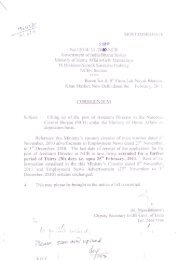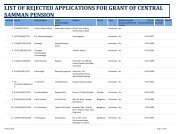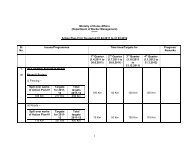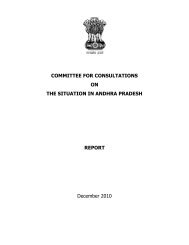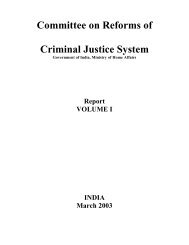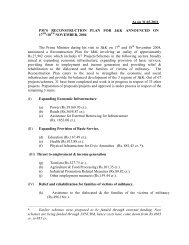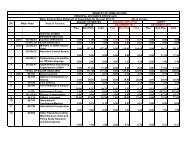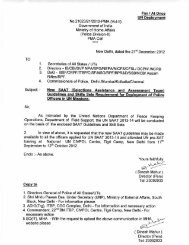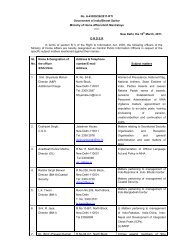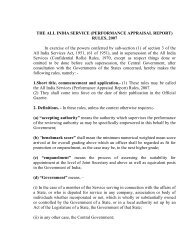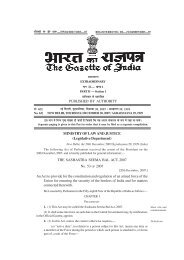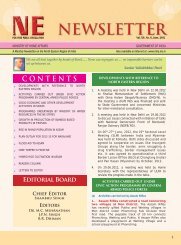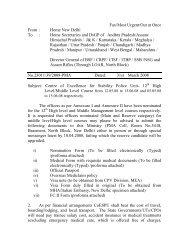Book of Integration Council New - Ministry of Home Affairs
Book of Integration Council New - Ministry of Home Affairs
Book of Integration Council New - Ministry of Home Affairs
Create successful ePaper yourself
Turn your PDF publications into a flip-book with our unique Google optimized e-Paper software.
also aware that there are imbalances within the State itself, which need to be taken<br />
care <strong>of</strong>. To this objective the State Government has already decentralized powers<br />
and started the process <strong>of</strong> devolution <strong>of</strong> funds to Sixth Scheduled<br />
Areas and 6 (six) newly created Development <strong>Council</strong>s for communities, which<br />
fall outside the sixth schedule areas. We belive that with people’s participation,<br />
democratic decentralization there would be both equitable development and regional<br />
balance within the State. On the other hand, a special programme proposed during<br />
current financial year for all round socio-economic development <strong>of</strong> the minorities.<br />
The Programme will be launched after due consultation with the representatives <strong>of</strong><br />
minority organizations and an amount <strong>of</strong> Rs.25 crore has been set-aside for this.<br />
Education system has a very important role in propagating societal harmony.<br />
Stress has been given to increase literacy rates among disadvantaged groups.<br />
Inter State mobility <strong>of</strong> students play an integral role in the promotion <strong>of</strong> national<br />
integration. It is necessary to inculcate the sense <strong>of</strong> national integration in the<br />
very mind <strong>of</strong> people by initiating the same in the tender age itself. In India where<br />
we have diverse culture, language etc. inter State mobility <strong>of</strong> students is a very<br />
good platform to promote national integration. Taking note <strong>of</strong> the linguistic<br />
diversity within our own State, we have allowed imparting <strong>of</strong> education in several<br />
languages. As matter <strong>of</strong> fact, text books in as many as 17 languages are printed<br />
in Assam. In Assam like in most other parts <strong>of</strong> the country, the minorities are<br />
relatively educationally backward. The literacy rate <strong>of</strong> minorities is at present<br />
45.25% as against the overall literacy rate <strong>of</strong> 63.25% for the state. It needs to be<br />
reiterated that Assam has a very large population <strong>of</strong> muslims who comprise<br />
approximately 31% <strong>of</strong> the population. The state government has laid special<br />
emphasis on the education <strong>of</strong> minorities by taking the following steps, among<br />
others:<br />
1. 2526 EGS (Education Guarantee Scheme) centers are functioning in<br />
minority-dominated areas. Out <strong>of</strong> 4,13,861 <strong>of</strong> school children covered<br />
under EGS Centers, 2,04,064 are minority children<br />
2. There are 1808 primary schools, 1022 EGS, 805 Songjogi Siksha<br />
Kendra located in char areas. That is against 2819 habitations in char<br />
areas, there are 3636 educational institutions.<br />
3. The Government has set up a separate Directorate for Madrassa<br />
Education.<br />
122



